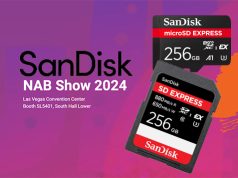Each year, fewer prints are made from silver halide film or put through the conventional development process. The overwhelming popularity of digital photography among both professional photographers and consumers has created a booming market space for digital color printing of specialty photo products, which include just about any alternative to a standard, 4×6-inch, one-sided print on photographic paper.
In place of traditional 4×6-inch prints, everyone from soccer moms to professional photographers are creating photo books, greeting cards, photo magnets, calendars, posters and various novelty items.
“These are the types of applications that stick around and serve as constant reminders not only of special events or appointments, but also of the power of specialty photo applications,” said Maggie Ochs, manager, Worldwide Product Planning & Marketing Strategy, Xerox Supplies. “Unique substrates, such as magnets, window clings and translucent bonds, enhance the impact of specialty photo applications and drive interest from potential clients.”
According to PMA, spending on these specialty applications grew 11.2 percent in 2006 compared to 2005, as a growing number of people seek to create valuable photo keepsakes. InfoTrends projects the North American market for these products will grow at an impressive compound annual growth rate of 24.5 percent through 2010, surpassing $800 million in revenue. While photo cards and specialty prints, such as enlargements, framed photos and collages, are currently the most popular specialty items, InfoTrends suggests the applications with the greatest growth potential are photo books and calendars.
“We’ve seen significant growth in the demand for specialty photo applications, especially photo books. In order to produce the high-quality images our customers expect, we’ve had to be very selective with the substrates we use,” said John Lacagnina, ColorCentric Corporation, a Rochester, N.Y.-based digital printing company specializing in short-run photo book printing and book publishing. “The total range of media available for digital printing has given us the ability to take on highly unique and complex requests.”
Professional and retail photo producers can capture their share of this growing market by investing in the software, systems and production equipment necessary to process digital input. However, what is printed on is just as important as what it is printed with, so print providers must give careful consideration to the type of substrates they will use.
“Every print provider can put marks on paper. To stand out and create photo applications that are truly unique, they must do so with the substrates they use,” said Brian Segnit, manager, Digital Photo and Book Printing Marketing of the Worldwide Graphic Communications Industry, Xerox Corporation. “Digital printing isn’t limited by substrates, there’s a wide variety of different stocks, bonds, colors and materials available. The ability to offer all of these media choices, along with recommendations on what works well, helps print providers differentiate themselves as well.”
The wide range of media available for digital printing – from general photo paper to translucent to synthetic to iron-on transfers and polyester film – can be used to create unique, attention-grabbing, revenue-generating jobs that help differentiate print providers’ photo offerings. The right substrates also help avoid poor print resolution and pixilation, dull images and inaccurate hues and tones.
There are several important factors to consider when selecting the right substrate for specialty photo products. Below are a few tips to guide you through the process.
Successful Selections
Determine the purpose of the photo project – announce the birth of a new baby, help seal a business deal, commemorate an important occasion, etc. – and what type of photo applications are most suitable to serve the purpose.
• ARCHIVABILITY
People want photos that last for a lifetime. The aging – discoloration and loss of strength – of substrates varies greatly depending on the pulping and production process used to create the paper, the type of material it is made of and the coating it has, the acidity of the ink, the lignin content of the substrate and the conditions in which the substrate is stored.
Modern substrates for digital printing can maintain their color for approximately 100 years or more if they are acid-, lignin- and optical brightening agent- free. Xerox recommends referring to the manaufacturer specifications of each media for accurate archival information and selecting the substrate that will most effectively suit the application being developed.
Paper weight, measured in pounds or grams per square inch (gsm), indicates the density of a paper. For instance, traditional business paper found in an office is usually a 20 to 24lb. bond while photo paper used for prints is generally a heavier stock of 45 to 75lb. bond. The thickness, or caliber, of a paper is measured in mils and is important because it indicates the stiffness of the paper, which affects how it is handled by the printer and how well it will resist tears, cracks and creases.
• OPACITY
Opacity is a measurement used to describe how well the paper will block the ink on one side from showing through on the other and is ranked on a scale of 1 though 100, with 100 being the most opaque or see-through resistant. For most photo applications, a paper with a high opacity is necessary to prevent areas of solid color or halftones from being visible on opposite sides of the sheet.
For instance, Xerox Digital Laser Opaque offers a high opacity, which is especially important for photo applications that will use duplex (double-sided) printing, such as photo books, brochures and calendars. Many creative print providers and photographers are choosing to integrate less opaque substrates that can provide a look similar to vellum, into jobs to give them an artistic touch and make them more eye-catching.
• FINISH
The finish of a paper determines its smoothness or glossiness. There are three basic options available: glossy, semi-glossy and matte. Gloss finishes, for instance, give photo applications the smooth and shiny appearance synonymous with traditional photo-lab prints. Matte finishes usually feature a non-reflective coating that adds texture to a photograph for more vivid photos and great skin-tone reproduction, making them more popular with professional photographers. The glossiness of Semi-gloss finishes fall between glossy and matte levels and are great for printing photographs that will be framed or projects that feature a lot of landscape shots.
For specialty photo products such as stickers, greeting cards, invitations and calendars, matte and semi-gloss finishes tend to be the most widely used.
In today’s digital savvy world, everyone can print an acceptable 4×6-inch photo. For professional photographers, photo labs and imaging retailers to carve out a piece of the ballooning specialty photo market, they must use exceptional paper and media to create exceptional applications.
Taking the time to follow the steps outlined above will help in that endeavor and allow dealers to produce the type of high quality output the market is demanding. yy





